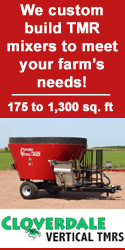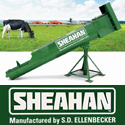Beef herd trends - Interest rates & expansion dynamics
USAgNet - 02/23/2024
The USDA's latest cattle inventory report reveals a shrinking US cowherd throughout 2023, despite strong calf prices. Factors like high input costs and regional weather challenges have led to this decline, marking a prolonged liquidation phase. Interest rates emerge as a critical, yet underdiscussed, factor influencing expansion decisions.
Typically, farmers expand their herds during high-priced periods, driven by the potential for higher future profits and the ability to meet financial obligations with fewer sales. Yet, the current high interest rate environment complicates this scenario, making the financing of breeding stock more expensive and diminishing the appeal of heifer retention due to increased opportunity costs.
The impact of interest rates extends beyond just financing costs; it also affects the time value of money, making immediate returns more attractive than future gains. This financial principle leads to a decreased interest in retaining heifers for future herd expansion, as the present value for money becomes more significant.
As we navigate through 2024, it's clear that weather conditions, calf prices, and production costs remain primary factors for herd expansion. However, the prevailing high interest rate environment introduces an additional layer of complexity, potentially delaying expansion efforts further.
Monitoring these rates will be crucial in predicting the turnaround of the current cattle cycle, highlighting the intricate balance between economic factors and livestock farming decisions.
- John Deere launches search for first chief tractor officer
- New US farmed seal to boost local agriculture on beer cans
- USDA announces new senior staff appointments
- USDA boosts healthy food access nationwide
- Brazil's crop estimates show major differences in 2024 projections
- Improving grain bin safety for rural resilience
- Dual Cicada broods set to emerge after two centuries



